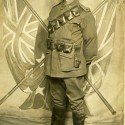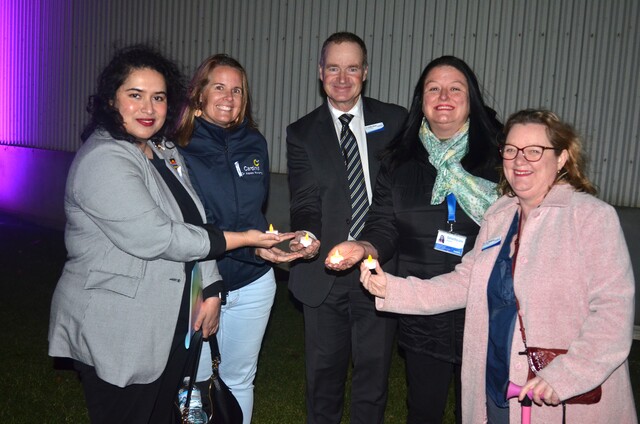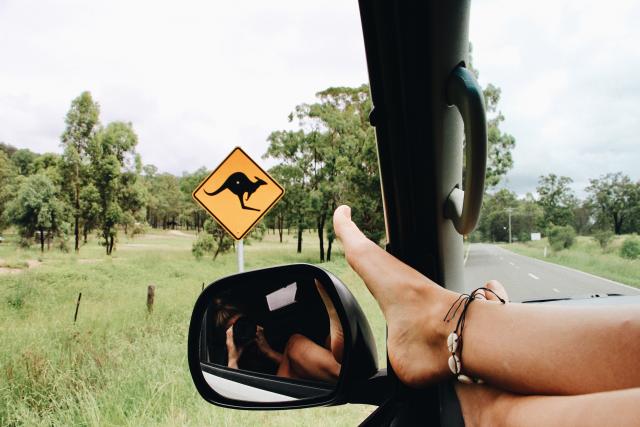
By NARELLE COULTER
THE amputation of a thumb failed to hamper Eric Keys’s writing ability as he passed time convalescing in Egypt far from his mates at Gallipoli.
A letter sent to his mother and printed in the Journal in September 1915, assured her that his thumb was “healing wonderfully“ but he thought it would be some time before he saw action again.
Eric was born in Keysborough in 1889. A famer, he enlisted as a Sergeant in the 8th Light Horse Reigment on 18 September 1914.
He was shipped first to Egypt, before embarking for Gallipoli on 15 May.
Sergeant Keys sustained several wounds on 1 July 1915 while fighting at Gallipoli.
His letter paints an evocative picture of the Gallipoli peninsula and the challenges faced in supplying food and water to frontline troops.
‘It consists of a succession of hills and deep ravines, rather rugged and covered with scrub about three to four feet high.
There is a rise of 40 feet in the first half first half mile from the sea, so you can imagine it’s fairly steep.
Along the coast the ravines run at right angles to the sea and end abruptly in a dead end. They are very much water-worn, and must all become torrents in the rainy season.
It’s a wonderful place for wild flowers.
Corn flowers, pippies, passion flowers, thyme, honeysuckle and many other flowers and shrubs abound.
Brackish water is easily obtained by sinking, but the quality and quantity are very poor.
It does the mules, but all drinking water is brought by tank steamer and pumped from them to storage carts, then put in canvas bags and packed on mules to the trenches.
This for 30,000 men is in itself no small undertaking.
There are roads cut up the hills now, but when the first force landed the place was in its natural state, plus a few barbed wire entanglements and of water there was none for two days except the bottle each man carried, so you, can readily imagine some of the difficulties they had to contend with.
Add to this a hail of rifle, machine-gun, and shrapnel fire and you’ve got a fair idea of things, and can appreciate the fight our fellows put up.
On the first day they drove the Turks out of their trenches and back for about two miles, but owing to the nature of the country, and Turkish reinforcements
coming up, had to retire to a line, about a mile at the furtherest point, from the beach and dug themselves in and held on.
This they managed to do in spite of many counter attacks and the losses from snipers.
At this time the snipers were all through our own lines, concealed in the scrub and used to pick our fellows off all day long.
Gradually they were killed or driven out and are now a thing of the past as far as our lines are concerned.
Some of them were concealed in pits dug in the scrub just deep enough to allow them to look out and shoot out and had a fortnight’s provisions and water and 2000 rounds of ammunition, and these took a lot of finding.
At the heads of the ravines, here, there is a peak running out like a peninsula and dropping sheer down about 300 feet.
It is only about 20 feet wide, and has a deep cleft a few yards from the point.
For a long time a sniper was concealed in this and as he commanded the road to the beach, did a lot of damage, till one day someone on the beach saw a movement in the cleft and got a pair of glasses and watched.
Then he reported the matter – a machine gun fired a burst of shots and the sniper was non-est.
He had some pigeons there, and they are still to be seen flying in and out of the cleft, interesting relics of one of the many tragedies.
For the first week or so all water stores and ammunition had to be carried up the hills to the firing line, but now the arrival of the mules has done away with all this labor.
It’s marvellous the work these mules do, tiny ones of about 12 and13 hands, carry enormous burdens and live on next to nothing.
There are hundreds of them and their value is inestimable.
The trenching we’ve done, too, would open your eyes – miles and miles of it, about five feet deep and from two to eight feet wide.
The total trenching done in three main theatres of war would have cut half a dozen Panama Canals.
If you look at one of the war maps in the paper you’ll see the bit of country the Australians hold.
It is in the form of a half-circle, and runs from Gabe Tepe to a little way past Anzac, or to within about two miles of a salt lake you’ll see marked.
Anzac is a coined name for our base landing place and was given to commemorate the landing of our troops – the capital letters of Australian and New Zealand Army Corps make the word.
Recently troops have been landed away on the heights of Gaba Tepe to link up our forces with those at Cape Helles.
Of course, as I suppose you know, the hill Archi Baba is the key to the whole peninsula as well as to The Narrows and until it is taken there will be no general advance.’
Eric recovered from his wounds and saw further action on the Western Front.
In 1916 he was promoted to captain.
He returned to Australia in March 1919 and soon after married Henrietta Maxwell.
The couple had three children and Eric lived in Foster Street, Dandenong, for the rest of his life.







